You are using an out of date browser. It may not display this or other websites correctly.
You should upgrade or use an alternative browser.
You should upgrade or use an alternative browser.
STRANGE CLOUDS
- Thread starter Juba
- Start date
angelburst29
The Living Force
Photos of unusual nature phenomena often go viral on the web, and this weird cloud formation is no exception.
Mysterious Spherical Cloud Appears Above Japan (Photos)
https://sputniknews.com/art_living/201612131048511062-japan-unusual-sphere/
Dec. 13, 2016 - resident of Fujisawa, a city in Kanagawa Prefecture, Japan, published a few pictures of a spherical cloud that looks absolutely mysterious.
The user revealed that she saw this ball-shaped cloud when she looked out of the car window. She gazed at the cloud for a while, and only then rushed to take the photo, she wrote on Twitter. The Fujisawa resident, however, claims the cloud was already losing its shape by that time. Its outline was more blurred than when she saw it with her eyes.
Some experts pointed out that the woman lucky enough to have witnessed a rare climatic phenomenon, which spins in the clouds in "rolls." Such clouds appear on windy days, when the cold and denser air mixes with the rising warm and light air, creating a rotational movement.
Mysterious Spherical Cloud Appears Above Japan (Photos)
https://sputniknews.com/art_living/201612131048511062-japan-unusual-sphere/
Dec. 13, 2016 - resident of Fujisawa, a city in Kanagawa Prefecture, Japan, published a few pictures of a spherical cloud that looks absolutely mysterious.
The user revealed that she saw this ball-shaped cloud when she looked out of the car window. She gazed at the cloud for a while, and only then rushed to take the photo, she wrote on Twitter. The Fujisawa resident, however, claims the cloud was already losing its shape by that time. Its outline was more blurred than when she saw it with her eyes.
Some experts pointed out that the woman lucky enough to have witnessed a rare climatic phenomenon, which spins in the clouds in "rolls." Such clouds appear on windy days, when the cold and denser air mixes with the rising warm and light air, creating a rotational movement.
Friday, March 07, 2014, 8:02:18 AM
Looking West 40 Km from Reno Nv. a Lenticular cloud.
Added
Looking the same direction (west), same location.
Saturday, August 15, 2009 Nevada USA. This one seemed to have a shaft of light angled to the right end, like a anchoring tractor beam. It was also very windy that evening but it kept it's position.
_http://icecream.me/uploads/b01920211ae72e9e4a63d20a6f2b1589.png
_https://vimeo.com/177524945
_http://icecream.me/uploads/7ee8b57718a6f7bab1b4da447e0d3e90.png
Looking West 40 Km from Reno Nv. a Lenticular cloud.
Added
Looking the same direction (west), same location.
Saturday, August 15, 2009 Nevada USA. This one seemed to have a shaft of light angled to the right end, like a anchoring tractor beam. It was also very windy that evening but it kept it's position.
_http://icecream.me/uploads/b01920211ae72e9e4a63d20a6f2b1589.png
_https://vimeo.com/177524945
_http://icecream.me/uploads/7ee8b57718a6f7bab1b4da447e0d3e90.png
Attachments
Insane asperatus clouds engulf the sky over western Oklahoma (Two 0f Seven Pic's)
ByStrange Sounds - May 24, 2017
http://strangesounds.org/2017/05/insane-asperatus-clouds-sky-oklahoma-photo.html
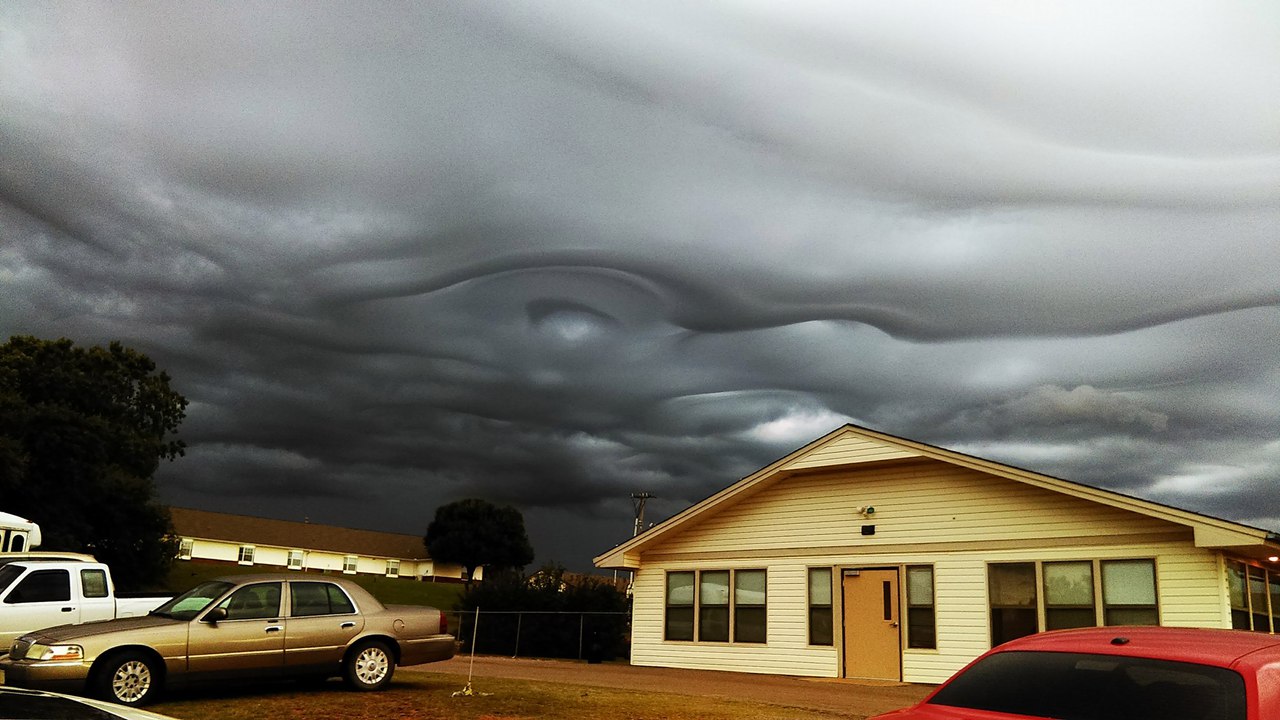
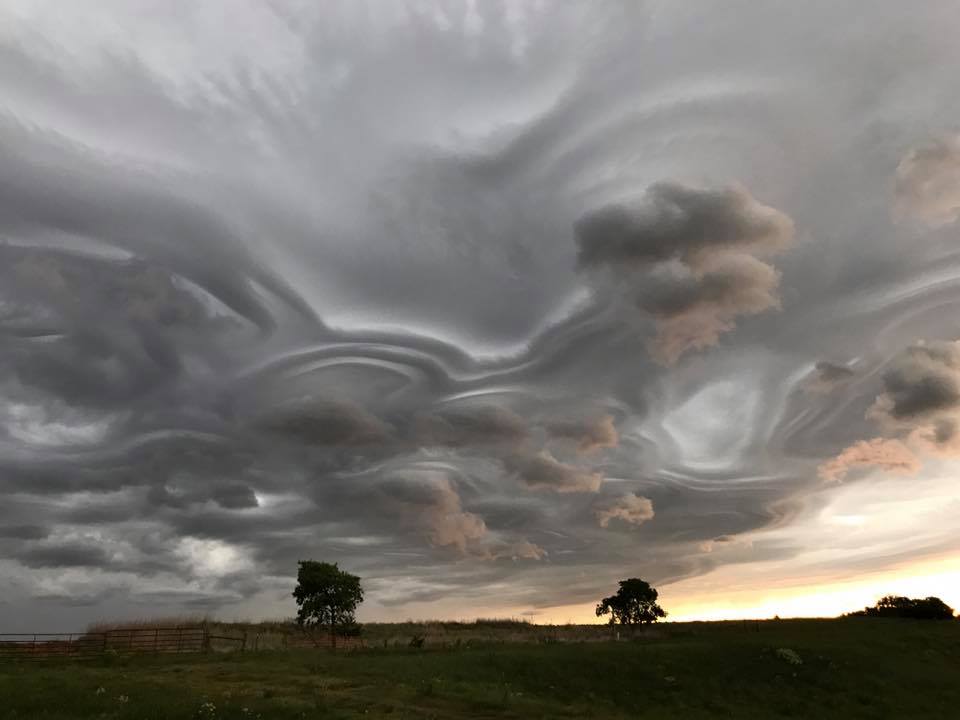
In Ukraine July 10 2016
Published on Feb 9, 2017
ByStrange Sounds - May 24, 2017
http://strangesounds.org/2017/05/insane-asperatus-clouds-sky-oklahoma-photo.html
Looking at the pictures below you will probably understand why Undulatus asperatus certainly one of the most out-of-this-world cloud formation is!
These pictures are indeed more than insane!

As if the cloud vortex wanted to swallow up that house. via VK.com

A furious ocean in the sky of Oklahoma. via VK.com
Joe said:If you haven't done so, you should check out this article by Laura (July 16, 2003)
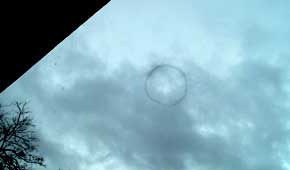
http://www.cassiopaea.org/cass/Laura-Knight-Jadczyk/article-lkj-16-07-03.htm
In Ukraine July 10 2016
Published on Feb 9, 2017
angelburst29
The Living Force
Crazy "Cool Cloud" spins like a disc for HOURS in the Sky! | SAME SPOT
https://www.youtube.com/watch?v=UiTIwD6hAaY (1:14 min.)
Published on Feb 11, 2017: A rare sky phenomenon was captured by the skycam that is positioned atop a volcano dome in Hawaii. CFHT
https://www.youtube.com/watch?v=UiTIwD6hAaY (1:14 min.)
Published on Feb 11, 2017: A rare sky phenomenon was captured by the skycam that is positioned atop a volcano dome in Hawaii. CFHT
angelburst29
The Living Force
Great timing on this reporting - this event happened on Monday but is being reported on Tuesday. Guess, better late than never? Interesting also, the Northeast is in the mist of a sudden heat wave (91 degrees on Monday, with over a 60% dew point and 98 degrees this Tuesday )
http://www.accuweather.com/en/us/scranton-pa/18503/weather-forecast/330292 and NASA decides to play with clouds? Wonder, if they are also partially responsible for the sudden shift in day time temperatures in the high 50's and sudden out break into the 90's?
If all goes well, NASA will launch a rocket into the Earth’s atmosphere over the east coast of the US on Monday that will cause colorful clouds to temporarily decorate the sky -- as if the sky requires a designer’s touch.
NASA to Release Colorful Clouds Over New York to Study Earth’s Atmosphere
https://sputniknews.com/science/201706131054568713-nasa-launches-cloud-making-rocket/
NASA will track the motion of colorful, chemically induced clouds within the ionosphere and aurorae, at altitudes between 96 and 124 miles up, as a means to visually track the motion of excited particles in space, according to Newsweek.
The rocket, currently set to launch at 8:30 p.m. ET, will release ten small canisters, each about the size of a can of soda, that will then disperse small amounts of barium, strontium and cupric-oxide which, after interacting, will cause the man-made clouds to form.
The US space agency has promised that the chemicals released into the upper atmosphere, and their resulting combinations, pose no threat to people or other forms of life on the ground.
The bright blue-green and red clouds are projected to be visible from areas in New York, all the way down south to North Carolina and west to Charlottesburg, Virginia.
In visually studying the motions of particles released into the Earth's upper atmosphere, NASA seeks to understand the transfer of mass and energy in the regions bordering space.
"The movement of neutral and ionized gases are important to understand as they reveal how mass and energy are transported from one region to another. These movements also respond to changes in the sun's activity," NASA said in a statement.
The tests will "measure atmospheric winds and/or ion drifts in the upper atmosphere and ionosphere," according to the space agency.
"By tracking the motions [of the gas] directly with cameras on the ground or in an airplane, these tracers make it possible to observe the movements of the upper atmosphere or the ionosphere," stated NASA.
Live coverage of the launch and the clouds will be available online through the NASA web site.
http://www.accuweather.com/en/us/scranton-pa/18503/weather-forecast/330292 and NASA decides to play with clouds? Wonder, if they are also partially responsible for the sudden shift in day time temperatures in the high 50's and sudden out break into the 90's?
If all goes well, NASA will launch a rocket into the Earth’s atmosphere over the east coast of the US on Monday that will cause colorful clouds to temporarily decorate the sky -- as if the sky requires a designer’s touch.
NASA to Release Colorful Clouds Over New York to Study Earth’s Atmosphere
https://sputniknews.com/science/201706131054568713-nasa-launches-cloud-making-rocket/
NASA will track the motion of colorful, chemically induced clouds within the ionosphere and aurorae, at altitudes between 96 and 124 miles up, as a means to visually track the motion of excited particles in space, according to Newsweek.
The rocket, currently set to launch at 8:30 p.m. ET, will release ten small canisters, each about the size of a can of soda, that will then disperse small amounts of barium, strontium and cupric-oxide which, after interacting, will cause the man-made clouds to form.
The US space agency has promised that the chemicals released into the upper atmosphere, and their resulting combinations, pose no threat to people or other forms of life on the ground.
The bright blue-green and red clouds are projected to be visible from areas in New York, all the way down south to North Carolina and west to Charlottesburg, Virginia.
In visually studying the motions of particles released into the Earth's upper atmosphere, NASA seeks to understand the transfer of mass and energy in the regions bordering space.
"The movement of neutral and ionized gases are important to understand as they reveal how mass and energy are transported from one region to another. These movements also respond to changes in the sun's activity," NASA said in a statement.
The tests will "measure atmospheric winds and/or ion drifts in the upper atmosphere and ionosphere," according to the space agency.
"By tracking the motions [of the gas] directly with cameras on the ground or in an airplane, these tracers make it possible to observe the movements of the upper atmosphere or the ionosphere," stated NASA.
Live coverage of the launch and the clouds will be available online through the NASA web site.
Hypnotizing mothership supercell grows in Nebraska
Strange Sounds - Jun 17, 2017
http://strangesounds.org/2017/06/hypnotizing-supercell-nebraska-video.html
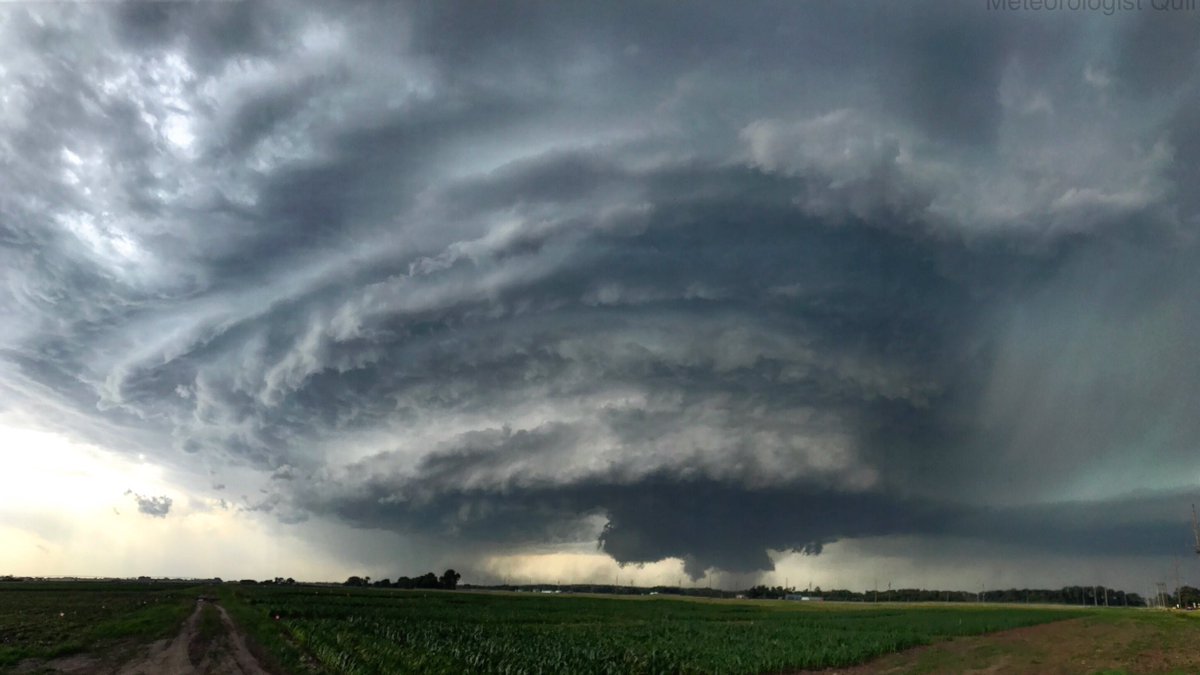
(1 of 4)
This hypnotizing time-lapse video filmed in Nebraska on June 16, 2017 shows exactly that
This apocalyptical electroactive cell strom engulfed the city of Chelyabinsk, Russia on June 16, 2017.
http://strangesounds.org/2017/06/monstrous-electroactive-storm-cell-chelyabinsk-pictures.html
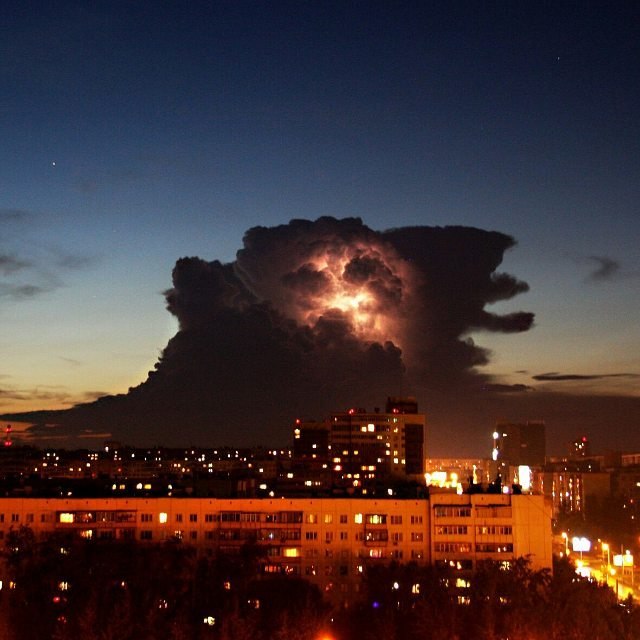
(1 of 4)
Telegraph
Sunday 11 June 2017
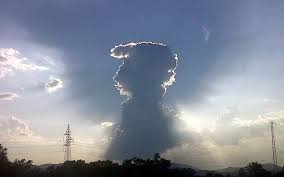
http://i.telegraph.co.uk/multimedia/archive/02984/elvis-cloud-potd_2984116k.jpg
An Elvis fan was stunned when she spotted this unusual cloud - which looks similar to the King. The shape bears an uncanny resemblence to the music legend - even down to his trademark quiff. Marta Gerique snapped this incredible shot after noticing the cloud in Valencia, Spain.
Strange Sounds - Jun 17, 2017
http://strangesounds.org/2017/06/hypnotizing-supercell-nebraska-video.html

(1 of 4)
This hypnotizing time-lapse video filmed in Nebraska on June 16, 2017 shows exactly that
This apocalyptical electroactive cell strom engulfed the city of Chelyabinsk, Russia on June 16, 2017.
http://strangesounds.org/2017/06/monstrous-electroactive-storm-cell-chelyabinsk-pictures.html

(1 of 4)
Telegraph
Sunday 11 June 2017
http://i.telegraph.co.uk/multimedia/archive/02984/elvis-cloud-potd_2984116k.jpg
An Elvis fan was stunned when she spotted this unusual cloud - which looks similar to the King. The shape bears an uncanny resemblence to the music legend - even down to his trademark quiff. Marta Gerique snapped this incredible shot after noticing the cloud in Valencia, Spain.
La Tuna Fire in southern Calif. and other images.... 
The biggest wildfire in Los Angeles history looks like a giant volcanic eruption
By Strange Sounds -Sep 4, 2017
http://strangesounds.org/2017/09/la-tuna-fire-largest-blaze-los-angeles-history-volcnic-eruption.html
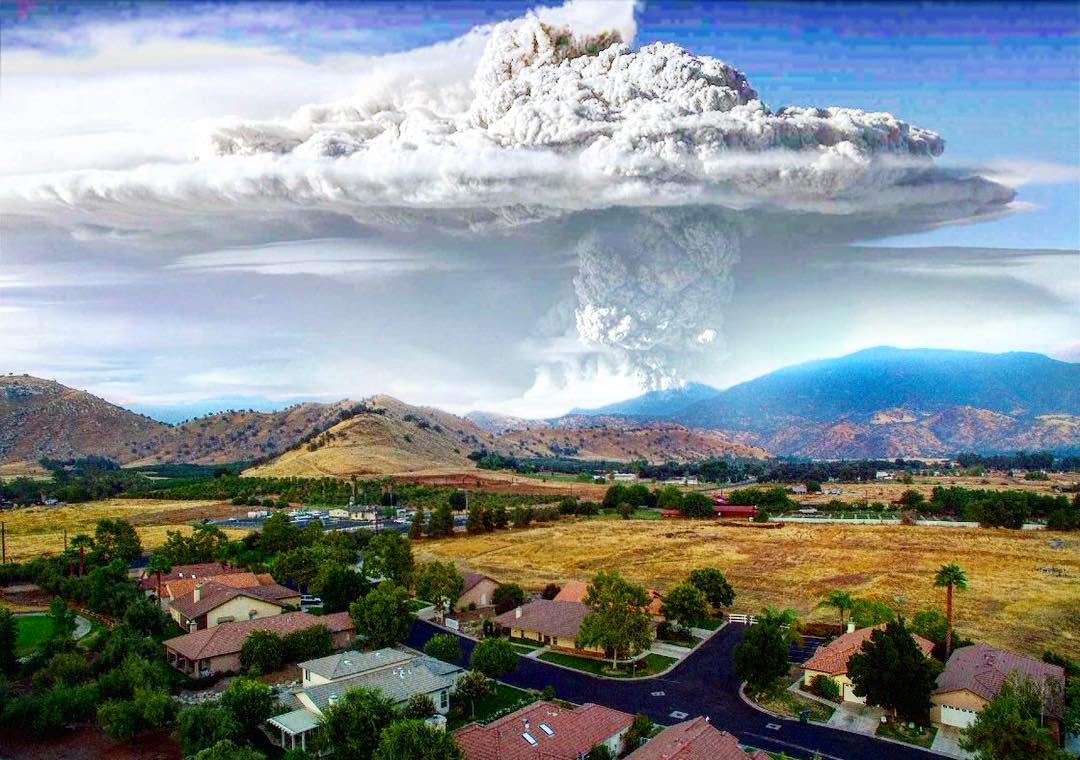
La Tuna Fire in coastal Los Angeles. via Insta
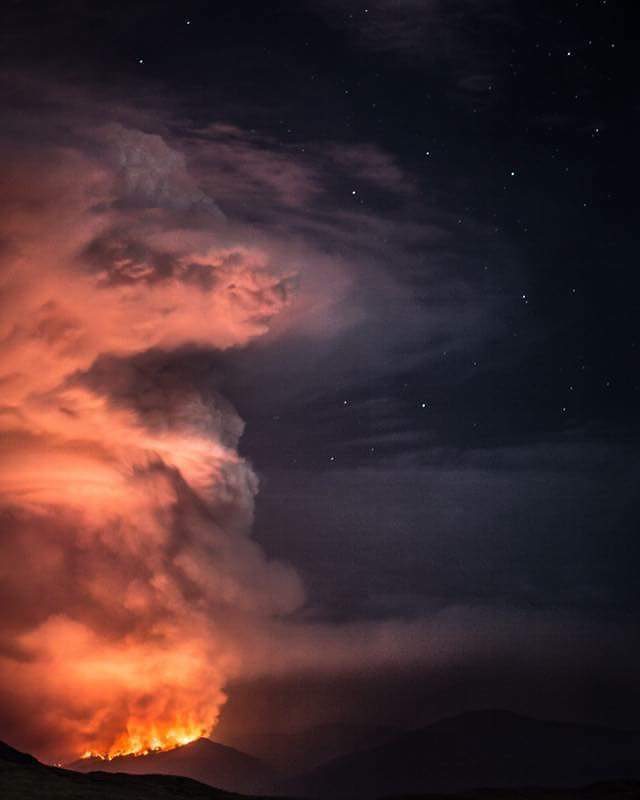
The major declared a La Tuna fire emergency near Los Angeles. via Insta
Something Giant Face In The Skies Weird Clouds (6:18)
Jun 1, 2017
https://www.youtube.com/watch?v=Et-2qUuHiKo
Stunning cloud formations captured around the globe. Slide Show (1 of 27)
http://www.express.co.uk/pictures/pics/3289/Lenticular-clouds-weather-nature-UFO-volcano-mountains-Russia-pictures


The biggest wildfire in Los Angeles history looks like a giant volcanic eruption
By Strange Sounds -Sep 4, 2017
http://strangesounds.org/2017/09/la-tuna-fire-largest-blaze-los-angeles-history-volcnic-eruption.html

La Tuna Fire in coastal Los Angeles. via Insta

The major declared a La Tuna fire emergency near Los Angeles. via Insta
Something Giant Face In The Skies Weird Clouds (6:18)
Jun 1, 2017
https://www.youtube.com/watch?v=Et-2qUuHiKo
Stunning cloud formations captured around the globe. Slide Show (1 of 27)
http://www.express.co.uk/pictures/pics/3289/Lenticular-clouds-weather-nature-UFO-volcano-mountains-Russia-pictures

Smaug is coming.
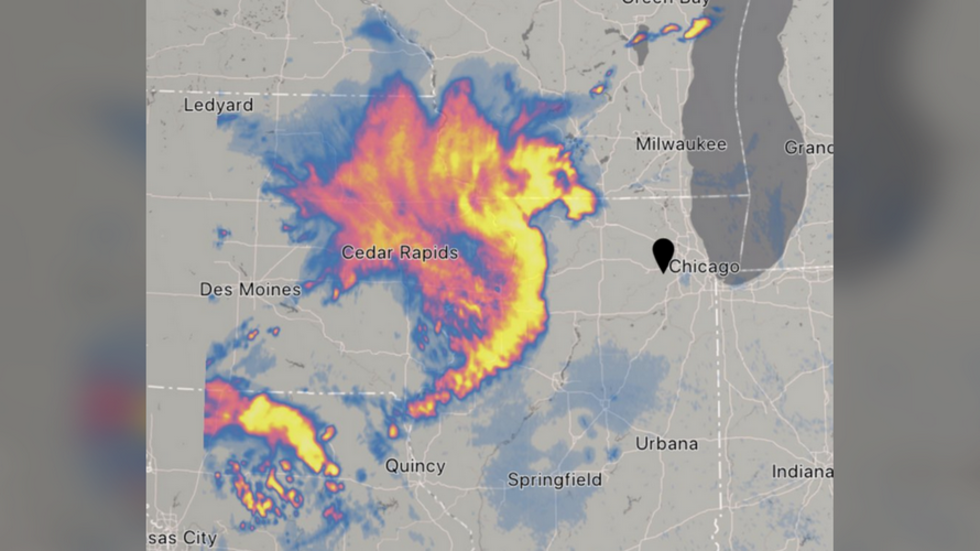
 www.rt.com
www.rt.com

Massive 'dragon-shaped' windstorm headed for Chicago
An enormous “derecho” storm cluster with winds up to 100mph has taken shape in the midwestern US, leaving a trail of destruction in its wake and heading straight for Chicago - as if the Windy City doesn’t have enough problems.
I saw an interesting photograph (and close-up) on a FB group about the Electric Universe Theory, and there was some speculation about what type of phenomena it was. Taken August 9th in Ashville in St. Clair County. 


So, what is it? First off thanks to Jamie and Reagan Smith for sharing their video and images, captured yesterday in Ashville in St. Clair County (at I-59 and US-231).
Here are the leading ideas...
*Crown flash. Very rare, and not much is known about the phenomena.
https://en.wikipedia.org/wiki/Crown_flash
*Sprite. Some kind of odd, low altitude, daylight version of a sprite.
https://en.wikipedia.org/wiki/Sprite_(lightning)
*Pileus. An odd variation of a pileus cap, found atop some thunderstorms.
https://en.wikipedia.org/wiki/Pileus_(meteorology)
Bottom line is that there is no clear answer. A reminder in meteorology, there is still much to learn about our atmosphere
I saw an interesting photograph (and close-up) on a FB group about the Electric Universe Theory, and there was some speculation about what type of phenomena it was. Taken August 9th in Ashville in St. Clair County.
Very strange imo. Meteorologist Ari Sarsalari from the Weather Channel is convinced in this video (can't embed it) that it is a crown flash.
According to wiki:
Crown flash
is a rarely observed weather phenomenon involving "The brightening of a thunderhead crown followed by the appearance of aurora-like streamers emanating into the clear atmosphere".[1] The current hypothesis for why the phenomenon occurs is that sunlight is reflecting off or refracting through tiny ice crystals above the crown of a cumulonimbus cloud. These ice crystals are aligned by the strong electro-magnetic effects around the cloud,[2] so the effect may appear as a tall streamer, pillar of light, or resemble a massive flash of a searchlight / flashlight beam through the clouds. When the electro-magnetic field is disturbed by electrical charging or discharging (typically, lightning flashes) within the cloud, the ice crystals are re-orientated causing the light pattern to shift, at times very rapidly and appearing to 'dance' in a strikingly mechanical fashion.[3] The effect may also sometimes be known as a "leaping sundog". As with sundogs, the observer would have to be in a specific position to see the effect, which is not a self-generated light such as seen in a lightning strike or aurora, but rather a changing reflection/refraction of the sunlight.
Most crown flash videos I have seen haven't had three separate parts and have been moving or 'dancing' as described above. This strange cloud phenomenon however seems quite static from this video anyway .
Another indicator of our rapidly changing electrically charged atmosphere?
Wow, this might seem like an optical illusion or CGI but these clouds are for real. Buzz60’s Mercer Morrison has the story.
Video : 32 seconds
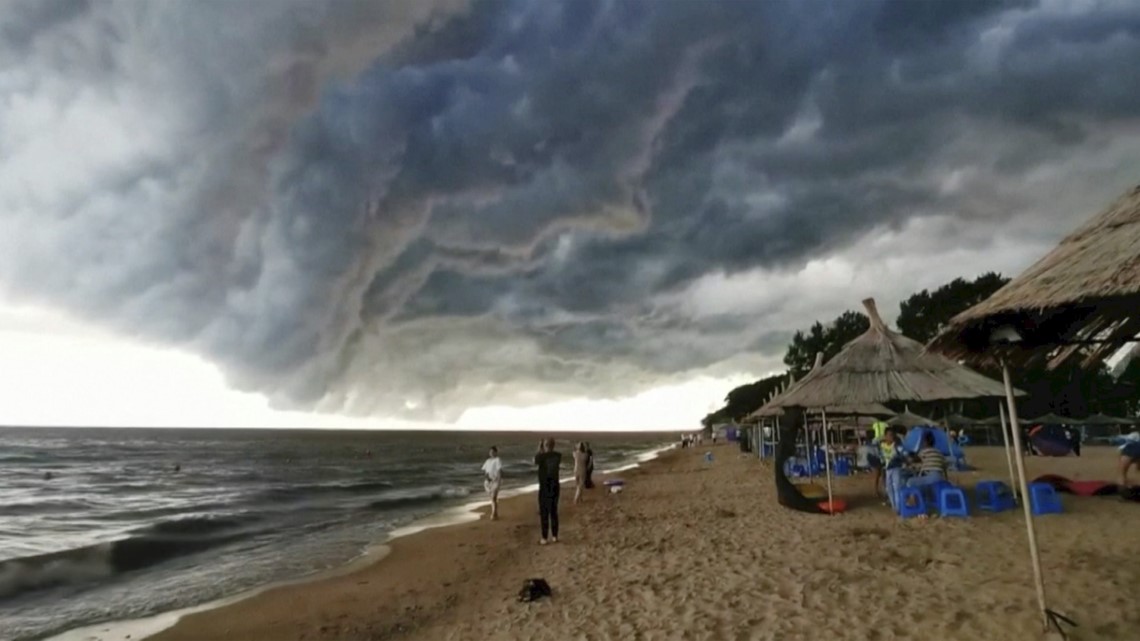
Video : 32 seconds



